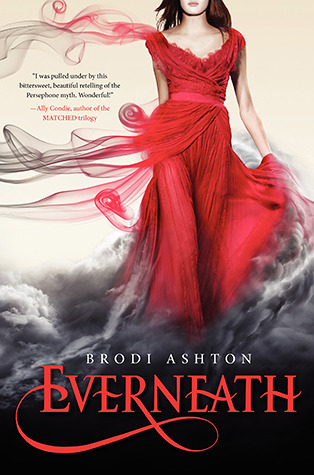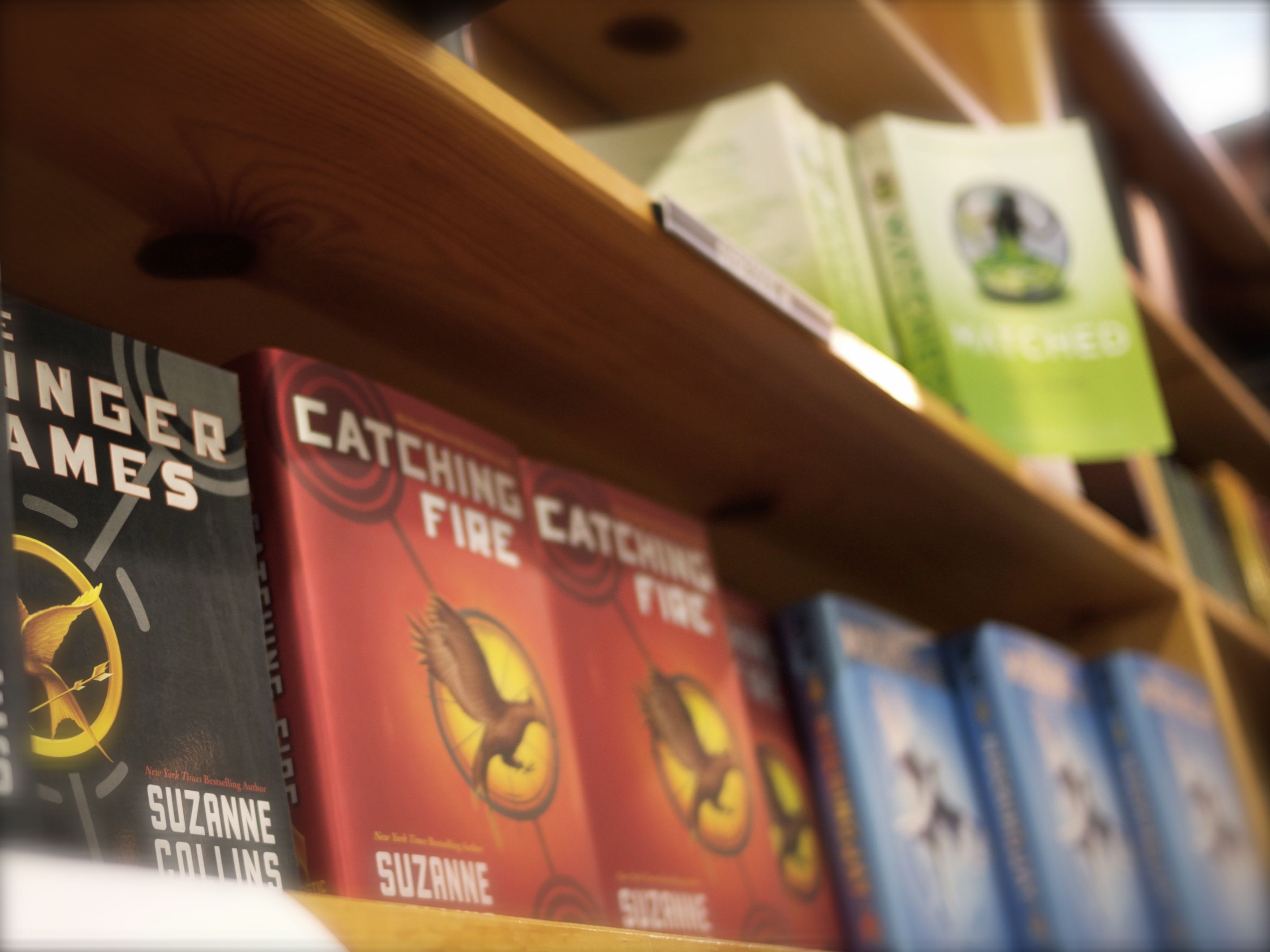Are you reading YA?
An Easy Guide to YA Book Identification
Around the ol’ interwebs, there seems to be some confusion about what “YA” is and what books fit into this category.
To clarify quickly, it does not stand for “Young Age” nor does it stand for “Yeah, Anything.” It stands for “Young Adult,” meaning—loosely—“teen.”
It is a book category (not a genre, which is another one of my linguistic bugaboos) with an teenage audience in mind. It is not a reading level.
These mis-categorizations never cease to annoy me. I think it has to do with that it symbolizes some adults’ insistence on invalidating the entire teenage experience. Instead of pointing to legitimately young adult/teen titles, they look at nostalgically on books they loved as children, or point to books written for adults that see teens through the lens of the adult experience.
The teen years are very important in the path to becoming an adult, and by disregarding books that depict that experience, adults are saying something, aren’t they?
Here are my quick tips for identifying if a book is a young adult title.
NOT YA. The title should’ve been the tell. Or possibly the mention of life as a third grader.
Is the book shelved as a “chapter book”? Then, no, you are not reading YA.
Most bookstores and libraries have sections labeled “Chapter Books” or “Juvenile Fiction.” If you are in this section, you are not reading YA. And yet, this continues to confuse many, many people. The Atlantic’s book coverage is so absurd that I’ve largely stopped paying attention to it, but everytime that outlet mentions YA, the amount of wrongness invariably makes me laugh out loud. But they are one of the worst offenders of this. They included Ramona Quimby, Age 8 (age 8, people—that should’ve been the first clue), Harriet the Spy (WTF, just WTF) and Little House on the Prairie as book featuring their favorite girl characters from from YA literature. No, just no.
Like I said, YA stands for “Young Adult,” not “Young Age.”
Was it on your third grade reading list? Nope, you’re not reading YA.
Yes, Flavorwire, I’m talking about you. Good grief.
I should not have to explain why this is wrong.
Did it win an award for children’s or middle grade books? Then, no, you are not reading YA.
The brilliant (*ahem*) commenters on NPR’s poll of the best teen titles have decried the ommission of several award winners—which are all awards for children’s books. For example, if it won a Caldecott, that means it is a children’s picture book, not a book for a teen audience. Award-winning Middle Grade books like Inside Out and Back Again are wonderful—however, they are not YA. On the other hand…
See that big gold “P’? That’s a Printz Award, which means it’s a very good book for teens.
Did it win a Printz? Then, yes, you are most likely reading YA.
The folks over at the American Library Association are very knowledgeable about book categories (being librarians and all) and they give out an award, the Printz (login required to view the list of past winners, which is completely ridiculous), recognizing some of the best in the YA category. Use this as your guide if there’s any confusion about what is and is not YA.
Great book. Not YA.Is it a Middle Grade book? Then, no, you’re not reading YA.
This is where a lot of people get tripped up. Middle Grade and Young Adult are two separate categories. Many people’s beloved books from their youth are actually in the Middle Grade category, meaning books targeting the 10-year old to 12-year old age group. I totally get the nostalgia for this category, but it is not YA.
Yes, you read it and loved it when you were 14. But it’s not a YA novel. It is a classic novel for adults.
Did you read it as a teen? Well, that doesn’t necessarily mean it is a YA novel.
Yes, I know you read and loved Pride and Predjudice as a teenager. I read Clan of the Cave Bear and Cujo as a teenager. And yet, that does not make any of those books YA novels. Audience is key in defining a YA novel, and all of those are considered to be targeted at an adult audience. Think of it in reverse: Just because I read and enjoy a YA title as an adult, doesn’t make the book an adult novel.
Yes, there are many teenage characters in this book. No, it is not YA.
Does the book feature a teen character? Well, it may be a YA novel—or not.
Young adult novels generally feature teen characters, but adult novels sometimes do too. Therefore, simply featuring one or more teen characters does not mean that a book is YA. For example, Jody Picoult’s Nineteen Minutes is often miscategorized as YA because it has a number of teen characters (I’m looking at you again, NPR commenters) and much of the events of the novel take place in a high school. However, this is where that tricky notion of “audience” comes into play. The intended audience is adults.
A 21 year old protagonist? Believe it or not, this is a YA novel.The character isn’t a teenager? Well, it’s probably not YA—but it might be.
Again, this is where audience (are we starting to see a trend here?) and the themes are critical. One of my favorite young adult novels, The Piper’s Son by Melina Marchette, features a protagonist who’s 21 years old. And yet, it’s nonetheless a YA novel. The same can be said for another one of my favorites, Where She Went. (Many of these are now being categorized as “New Adult,” but I’m more comfortable with the term, “mature YA,” but that’s a post for another day.) The audience for these titles is still teenagers and they have a general theme of “coming of age,” hence the YA label.
Is she decapitated while wearing a pretty dress? *ding ding ding ding ding*
Does the cover have a girl in a pretty dress or headless body on it? Or both? You are probably reading YA.
Young adult fiction actually has quite a bit of different styles of cover art, but a surefire tell is the girl in the pretty dress cover. If you think about marketing to the intended audience (there’s that pesky word again), it kind of makes sense. These covers are appealing to teen girls, who buy loads of YA novels. Headless bodies are also very common in YA as well. Trend cautiously, though—these trends are also popular in adult romance.

Yep, I totally used this as an excuse to post this photo. ;)
Are you in the teen section of a bookstore or library? Then, yes, you’re reading YA.
This is a prety good indication that the books around you are YA. Just sayin’… (But be careful—I’ve observed some “literary” focused indie bookstores shelving quite a lot of Middle Grade fiction in their YA sections.)
Is it YA? Check out these resources!
- Stacked’s “So you want to read YA?” series
- Young Adult Library Services Association
- Wikipedia’s entry is surprisingly not awful
- Anna Read’s excellent post on why adults read YA
- Malinda Lo on why she writes YA
Okay, y’all… this is not an exhaustive list, so help me out, please! :)
What characterizes young adult fiction for you? What are some of your favorite resources about YA?

Winner, Winner: Unsecure Connection by Alanna Blackett














